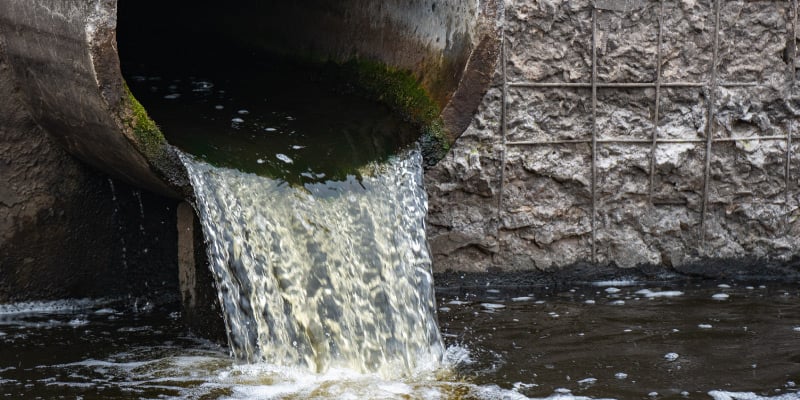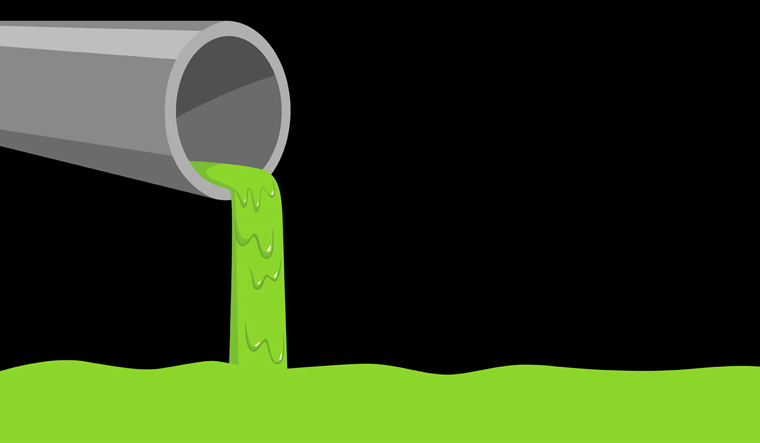Leading Industrial Wastewater Treatment Solutions: Guaranteeing Conformity and Efficiency
Wiki Article
Just How Fluid Garbage Disposal Works: A Thorough Summary of Methods and Technologies Utilized

Overview of Liquid Waste Kind
The complexity of liquid waste types requires a complete understanding of their attributes and effects for disposal. Liquid waste can extensively be classified right into numerous kinds, consisting of commercial, metropolitan, farming, and unsafe waste. Each classification exhibits distinct properties, calling for details monitoring approaches to minimize ecological and health and wellness risks.
Industrial liquid waste originates from manufacturing procedures and often contains a series of pollutants, such as heavy metals, solvents, and organic substances. Local fluid waste, largely consisting of wastewater from families and commercial facilities, consists of organic matter, nutrients, and pathogens (industrial wastewater treatment). Agricultural fluid waste, including drainage from farms, may include plant foods, chemicals, and animal waste, posturing dangers to water high quality and communities
Dangerous fluid waste is defined by its poisoning, sensitivity, or prospective to create damage. This category consists of substances like acids, bases, and certain chemicals that require rigid handling and disposal protocols. Understanding these varied liquid waste kinds is crucial for establishing effective disposal approaches and making certain compliance with environmental regulations. Appropriate classification and characterization are necessary for executing ideal therapy strategies and lessening the adverse effect on public wellness and the atmosphere.
Physical Treatment Methods

Testing is the first step, where larger fragments and particles are gotten rid of from the liquid waste using displays or grates. In sedimentation containers, heavier bits clear up at the bottom, forming a sludge layer, while the made clear fluid can be additional treated.
Filtration is an additional crucial technique that entails passing the fluid with porous products, such as sand or membranes, to record smaller particles. This action improves the quality of the fluid, making it suitable for succeeding therapy procedures.

Chemical Treatment Techniques
Chemical therapy strategies are essential for properly handling liquid waste, particularly in addressing liquified and colloidal pollutants that physical methods may not properly eliminate. These strategies use various chemical agents to counteract, precipitate, or change hazardous substances into much less harmful types.One usual technique is coagulation and flocculation, where chemicals such as alum or ferric chloride are included in promote the gathering of put on hold particles. This process enhances sedimentation, permitting easier elimination of the resulting sludge. Additionally, oxidation procedures, using agents like chlorine or ozone, are employed to damage down intricate organic compounds and microorganisms, providing the waste safer see this website for discharge or more therapy.
Neutralization is another important strategy, which adjusts the pH of acidic or alkaline waste streams to neutral levels, stopping prospective harm to downstream systems and the environment. Moreover, progressed oxidation processes (AOPs) use mixes of oxidants and ultraviolet light to deteriorate consistent contaminants, attaining a higher level of treatment efficiency.
Biological Treatment Processes
Biological therapy procedures play a vital duty in the monitoring of fluid waste by making use of bacteria to decay organic issue and lower impurity degrees. These procedures can be extensively categorized into cardiovascular and anaerobic treatments, each employing details microbial communities to achieve reliable waste destruction.Cardio therapy includes using oxygen to facilitate the failure of natural materials by bacteria. This procedure is generally carried out in triggered sludge systems, where aeration tanks offer a conducive atmosphere for microbial development, causing the oxidation of organic contaminants. The resultant biomass can be divided from treated effluent via sedimentation.
On the other hand, anaerobic therapy takes place in the lack of oxygen, relying upon various bacteria to damage down raw material. This technique is particularly advantageous for high-strength waste, as it creates biogas, a renewable resource resource, while lowering sludge production. Technologies such as anaerobic digesters click for more info are frequently utilized in industrial and municipal applications.
Both anaerobic and cardiovascular biological therapies not only minimize the environmental impact of fluid waste but likewise help with source recovery, making them vital components of lasting waste management methods. Their performance, efficiency, and flexibility support their extensive execution across various fields.
Emerging Technologies in Disposal
Ingenious approaches to liquid waste disposal are swiftly evolving, driven by innovations in technology and an enhancing focus on sustainability. Amongst these emerging technologies, membrane bioreactors (MBRs) have obtained traction for their capacity to combine biological therapy with membrane layer filtration, leading to top notch effluent that can be reused in numerous applications. MBRs enable smaller sized impacts and a lot more efficient procedures contrasted to typical systems.One more encouraging growth is using anaerobic digestion combined with nutrient recuperation technologies, which not only treats liquid waste however likewise produces biogas and recovers useful nutrients like nitrogen and phosphorus. This twin advantage enhances resource performance and lowers environmental effect.
In addition, progressed oxidation processes (AOPs) are being adopted for the degradation of complicated natural pollutants. These techniques use powerful oxidants and catalysts to damage down impurities at the molecular degree, offering a highly effective service for challenging waste streams.
Additionally, the combination of expert system and maker understanding in waste management systems is maximizing functional effectiveness and predictive maintenance, leading to minimized costs and enhanced environmental conformity. These modern technologies reflect a considerable change towards more lasting and reliable liquid garbage disposal practices.
Final Thought
In verdict, effective liquid waste disposal necessitates a thorough understanding of various techniques and technologies. By continually progressing these methodologies, it becomes feasible to address the expanding difficulties associated with fluid waste, ultimately adding to environmental security and source recuperation.Liquid waste disposal is an important aspect of environmental management, requiring an extensive understanding of different methods and modern technologies customized to different waste types. Liquid waste can broadly be categorized you could try here right into a number of kinds, consisting of industrial, local, farming, and dangerous waste. Agricultural fluid waste, consisting of overflow from ranches, may consist of plant foods, chemicals, and animal waste, posturing threats to water high quality and ecological communities.
Different physical therapy techniques play a critical duty in handling fluid waste successfully - industrial wastewater treatment.In conclusion, effective fluid waste disposal demands an extensive understanding of various methods and technologies
Report this wiki page